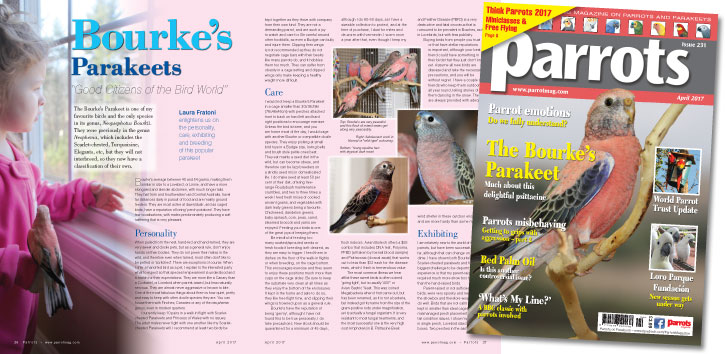
By Laura Fratoni
The Bourke’s Parakeet is one of my favourite birds and the only species in its genus, Neopsephotus Bourkii. They were previously in the genus Neophema, which includes the Scarlet-chested, Turquoisine, Elegants, etc, but they will not interbreed, so they now have a classification of their own.
Bourke’s average between 40 and 54 grams, making them similar in size to a Lovebird, or Linnie, and have a more elongated and slender abdomen, with much longer tails. They hail from arid Southwestern and Central Australia, travel far distances daily in pursuit of food and are mainly ground feeders. They are most active at dawn/dusk, and as caged birds, have a reputation of being ‘perch potatoes’. They have few vocalisations, with males predominately producing a soft twittering that is very pleasant.
When pulled from the nest, hand-fed and hand-tamed, they are very sweet and docile pets, but as a general rule, don’t enjoy hands on their bodies. They do not preen their mates in the wild, and therefore even when tamed, most often don’t like to be petted or ‘scritched’. There are exceptions of course. When I offer a hand-fed bird as a pet, I explain to the interested party what to expect so that species temperament is understood and a match for their expectations. They are more like a Canary than a Cockatiel, or Lovebird when parent-raised, but less naturally nervous. They are almost never aggressive or known to bite. One of the most fabulous things about them is how quiet, pretty and easy to keep with other docile species they are. You can house them with Finches, Canaries or any of the neophema genus, even in modest quarters.
Buy Now!

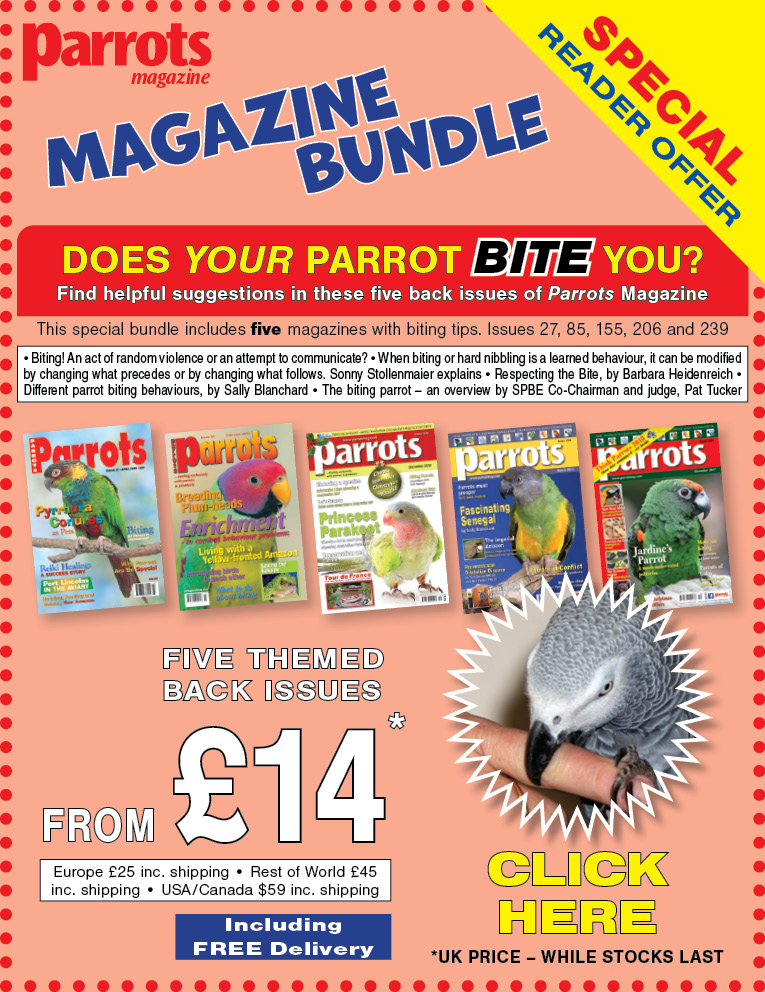
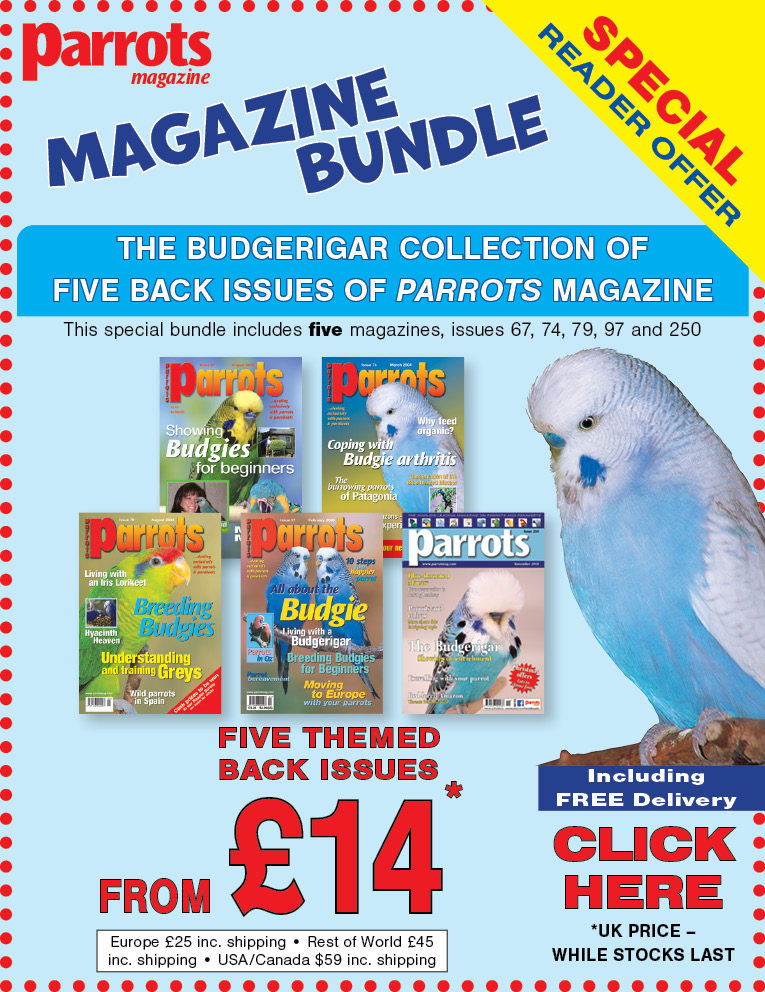
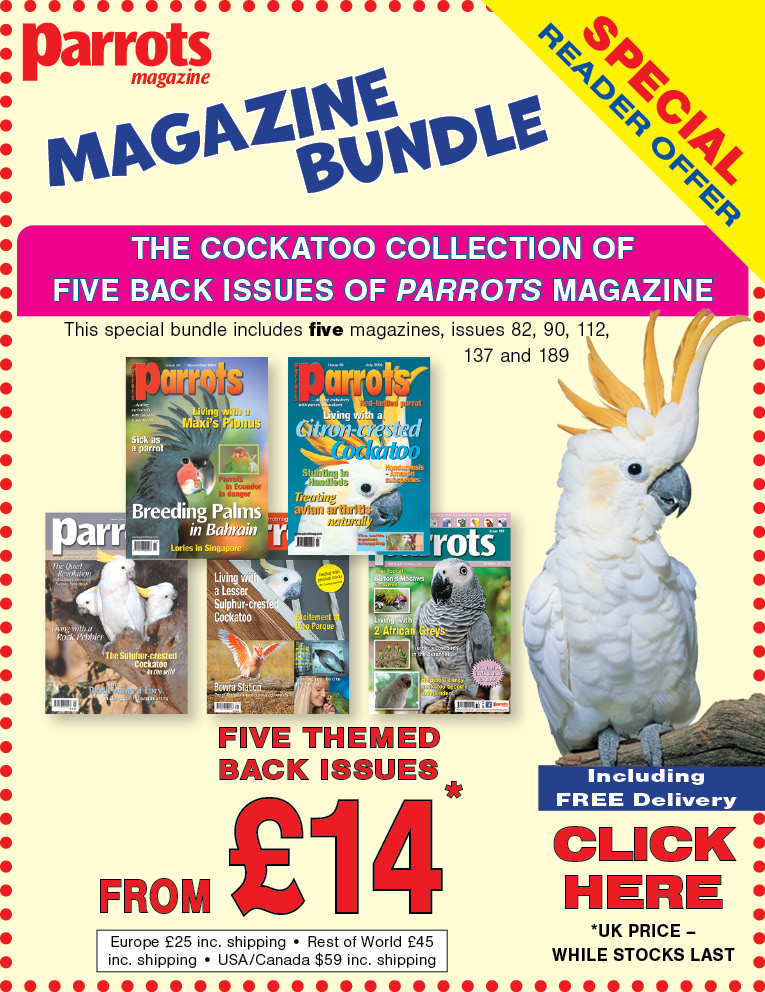
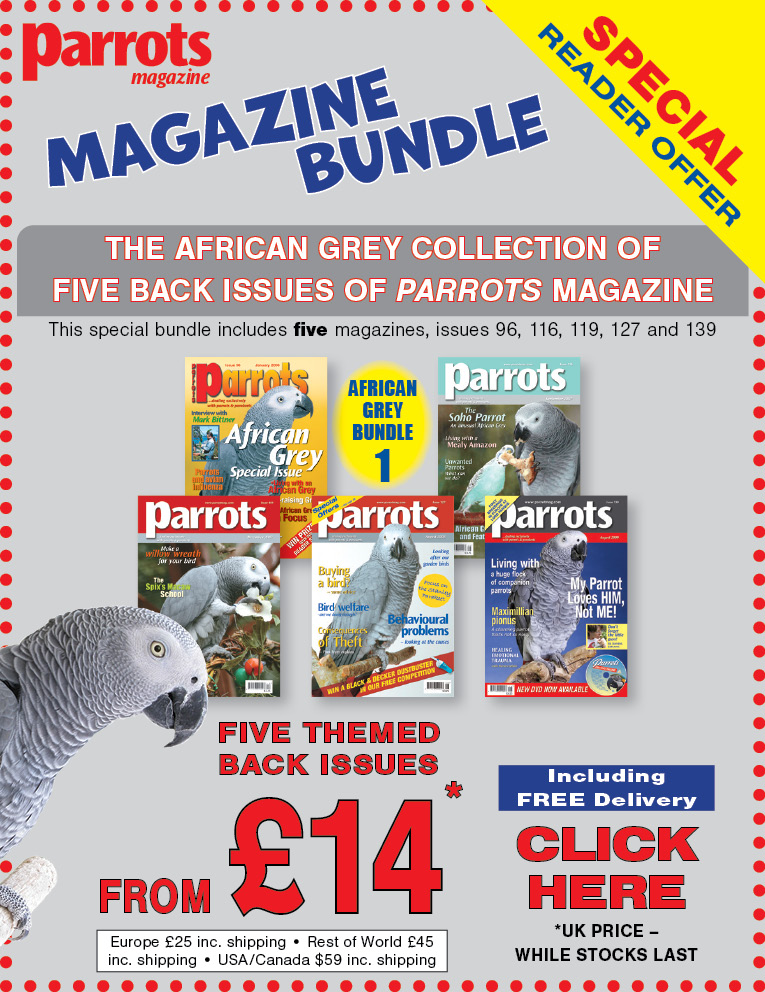

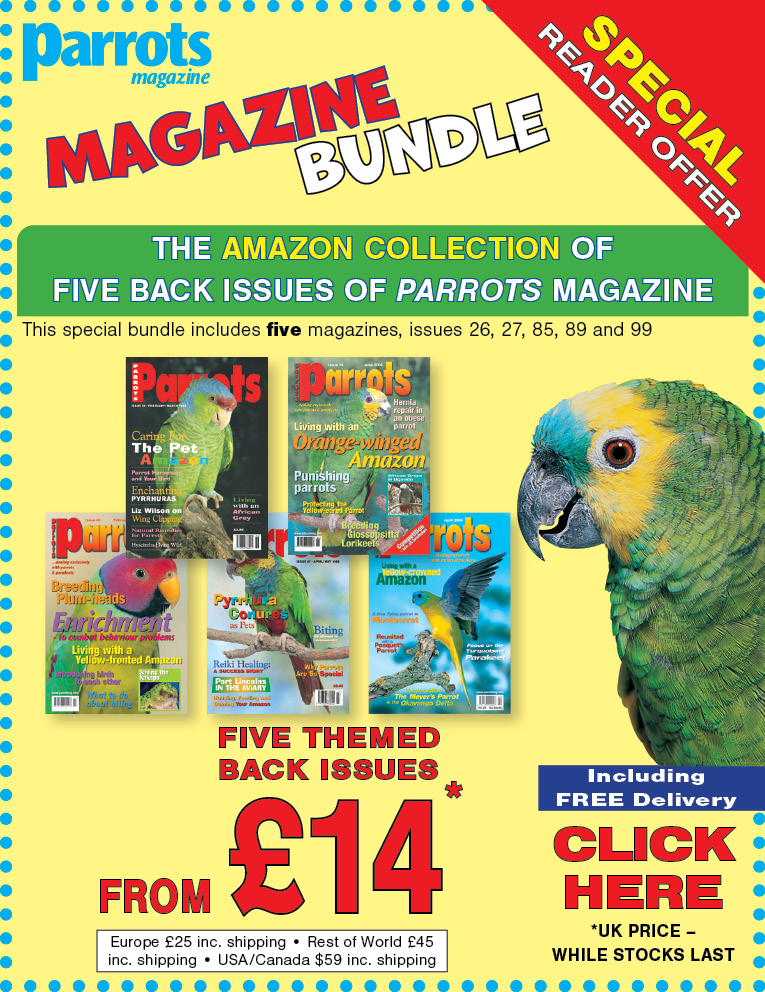

Parrot Chat
Buyers Guides
Breeding articles